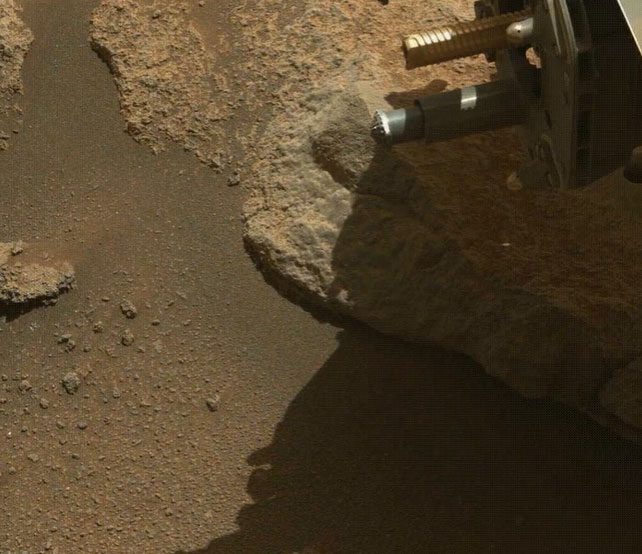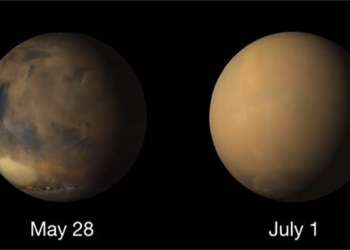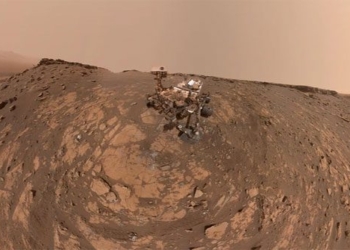The Perseverance rover points its drill down to the ground and spins quickly to make rock fragments in the sample tube fly out.

The NASA Perseverance rover successfully removed rock fragments that had clogged its sampling device since late December. Although this unblocking process had never been tested before, engineers executed it quite smoothly. Specifically, the drill containing the clogged sample tube was pointed downwards and spun at high speed until the rock fragments flew out.
The research team even recorded the process of Perseverance ejecting rocks with the Mastcam-Z scientific camera and shared the video on social media platform Twitter. “In order to continue my Mars sampling mission, I had to discard the latest samples. Watch closely to see a rock fragment fall to the ground in the footage. Luckily, I can reuse this tube to collect other samples from the same rock,” the research team, acting as the Perseverance rover, wrote on Twitter.
The unblocking process occurred in two steps, with the first part of the samples discarded on January 15 and the remainder removed on January 20.
This marks the sixth sampling attempt by Perseverance since it landed on Mars in February of last year. The rover is gathering rock and soil samples, which are expected to be brought back to Earth in the early 2030s by a Mars mission developed in collaboration between NASA and the European Space Agency (ESA).
Engineers detected a malfunction on December 29 when the robotic arm of Perseverance attempted to place a newly drilled sample into a wheel-like component designed to preserve samples. Data indicated that resistance was encountered when the arm tried to seal the sample container. This sample was taken from a rock referred to by scientists as Issole. The research team noted that the rover might attempt to drill this rock one more time.





















































